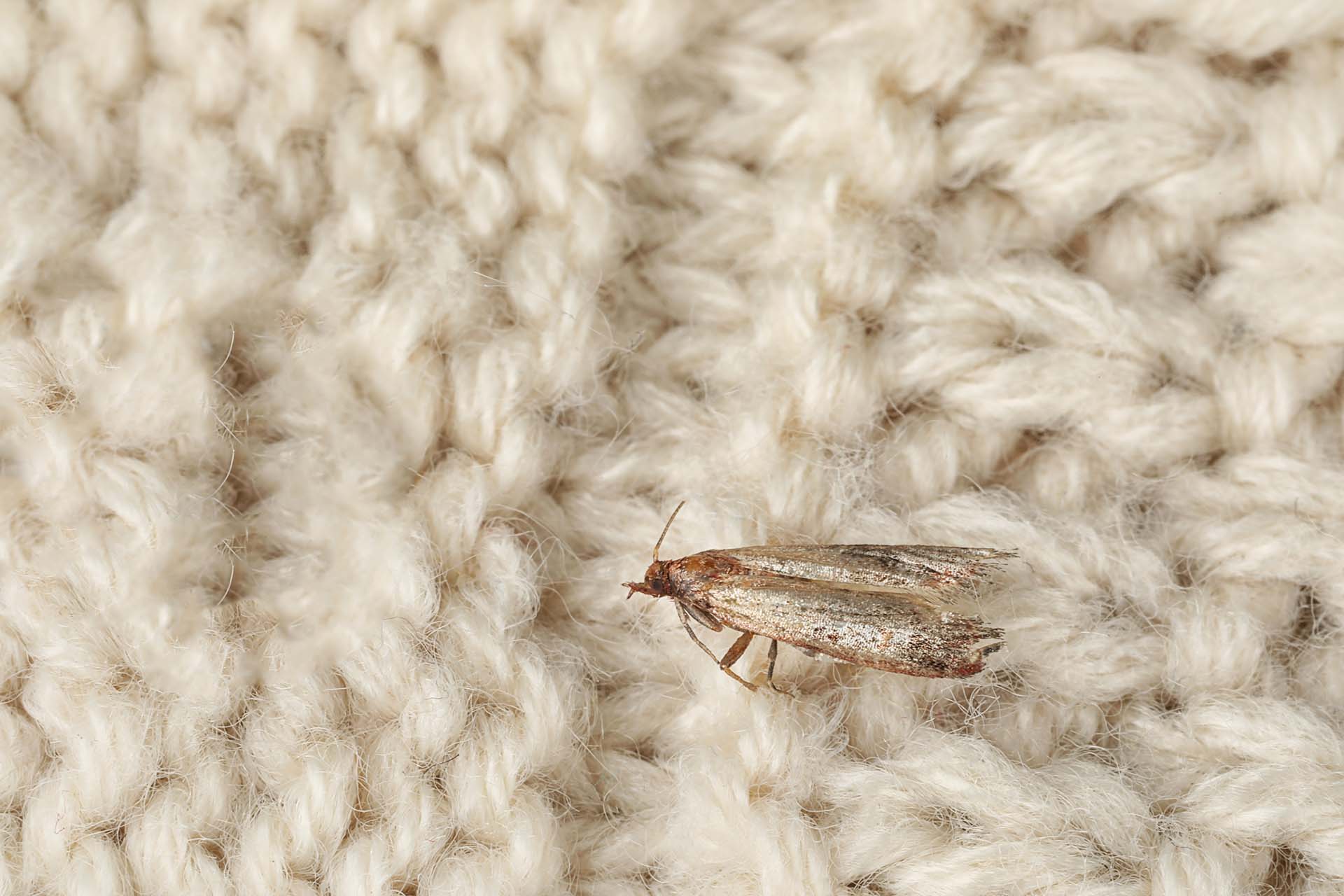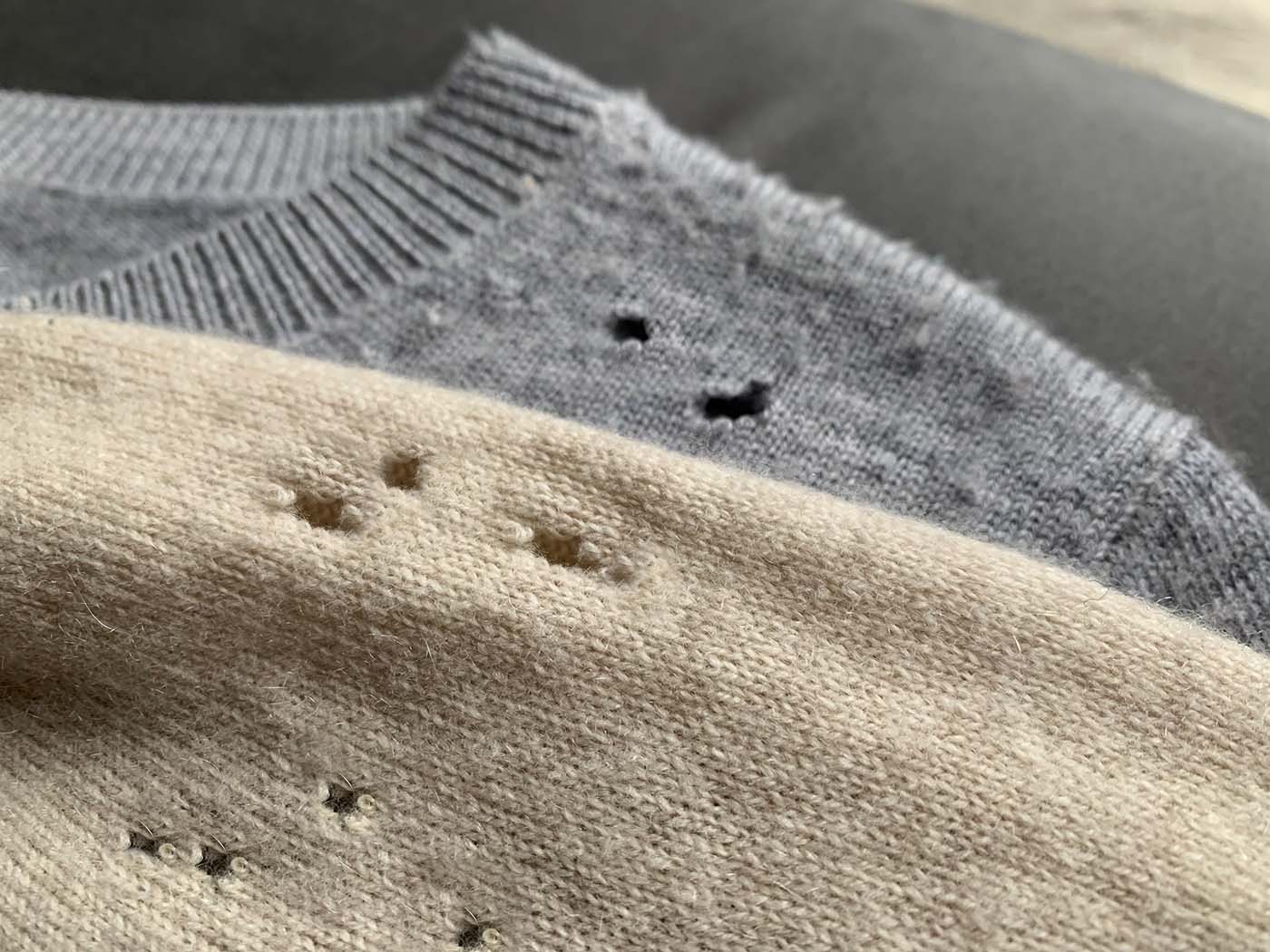Protecting Your Home From Moths
We have all heard or perhaps even used the phrase when describing material that has seen better days as “moth eaten”. This saying has been derived from experience, you may not be old enough to remember your mother or grandmother using moth balls in wardrobes and chests of drawers, years ago when there were less manmade fabrics, moths were a very real problem.
There are around 2,500 species of moths in the UK. While most are harmless, a few are considered to be pests. Moths aren’t known to spread disease, and don’t bite humans – in fact, many adult moths don’t even have mouths! Some moths are associated with stored food products and others are associated with textiles, fabrics and other organic matter.
Whilst not as widespread an issue as it used to be, moths are still a very real threat. An infestation of some species of moth can cause substantial damage to clothes and soft furnishings as the larvae will feed on a variety of materials of animal origin such as wool and fur, items like wool carpets, soft furnishings, leather furniture and clothing. The damage that they cause can be pretty severe. With milder winters and central heating, moths are now an all year-round problem. In this article we give tips on how to spot a moth infestation, take a look at what moths eat, when they are active, what to do if you think you have an infestation and what can be done to help prevent moths.
Moths
In homes in the UK there are two moths that are the biggest nuisance: the Case-bearing Clothes Moth and the Common Clothes Moth. Moths themselves typically only live 2-3 weeks after hatching and tend to be found outside between May and September. The problem is that with milder winters and in a lovely warm home with an abundance of food, they are a problem all year round.
The Problem with Moths
Moths themselves aren’t the issue, the problems stem from their larvae which are the ones that do all the damage. A moth will lay anywhere from 50 to 100 eggs on the material upon which the Larvae will feed. The larvae then hatch from the eggs and build their silken case all the while feeding on the material they have been laid on. They will happily feed on carpets, clothes, curtains and sofas (including leather sofas) and can cause some considerable often irreparable damage.
Signs of a Moth Infestation
Moths can be hard to spot as they like dark cupboards, wardrobes, drawers and spaces. The first sign that most people spot is holes in fabrics such as clothes hidden away in the wardrobe or carpets underneath furniture but there are a few other signs that there might be some activity:
- Small maggot like larvae (moth caterpillars)
- Silken tubes or ‘cases’ in which the moth larvae live
- Pupae (silk cocoons) from which larvae eventually emerge as adult moths
- Adult moths that are often crawling rather than flying
How to Prevent Moths
Prevention is always better than cure so here are some easy tips to try and keep moths away in the first place:
- Vacuum regularly and change vacuum bags often – Even if you don’t know you have a problem, you could be vacuuming up moths or larvae. Changing bags or emptying and cleaning the dust collection chamber often will remove any you have vacuumed up from staying in your home. Ensure when vacuuming, that you pay attention to corners and crevices.
- Only put clean clothes away and keep dirty clothes in sealed containers – female moths like to lay eggs on fabrics stained with sweat or urine as the larvae actually benefit nutritionally from these. If you are storing clothes long-term, after washing, put them into sealed storage bags or airtight containers.
- Check vintage purchases whether vintage clothes or antique linens & soft furnishings these should be dry cleaned or treated before being placed with existing fabrics as they might harbour moths or their larvae.
- Keep storage areas dry and well ventilated.
- Be vigilant – keep a constant look out for holes in garments & keep rooms dry and well-ventilated.
Dealing with a Moth Problem
There are DIY moth control insecticides and traps available for amateur use, but a moth infestation can be difficult to eradicate, without thorough treatment.
If you think you have a moth infestation, get in touch with our experts at iX5 Pest Control immediately. We are well versed with dealing with all types of insect infestations and we will conduct a thorough survey and detail our recommended solutions, including advising on preventative measures. We use a range of control strategies depending on various factors such as the location, the extent of activity, and any sensitive receptors or non-target species. Typically, treatment will either be a heat treatment or treatment using a safe, non-staining insecticide. The important thing that we will ensure, is that the treatment is carried out robustly and all areas where there might be moth larvae are treated.
At iX5 Pest Control we offer pest control for domestic premises and businesses in Northampton, Daventry, Rugby, Market Harborough, Towcester, Brackley, Wellingborough, Kettering, Corby, Olney and all of the surrounding areas. Our team of specialists are available both evenings and weekends at no extra cost. Should you require assistance call us on 01604 328545, email [email protected] or use our simple contact form.


